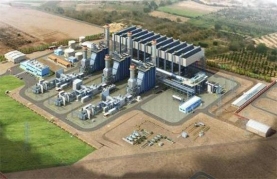Singapore
Does better energy policy loom in 2012?
A few years ago, while working on a power sector roadmap, a conversation turned to the perceived problems created by a lack of a comprehensive energy sector policy. Surely power sector planning would be better, my friend suggested, with a clearer policy in place to guide the substantial investment decisions required to meet growth reliably and efficiently. In this time of resolution-making for the year just begun, what would a good energy policy look like?
Does better energy policy loom in 2012?
A few years ago, while working on a power sector roadmap, a conversation turned to the perceived problems created by a lack of a comprehensive energy sector policy. Surely power sector planning would be better, my friend suggested, with a clearer policy in place to guide the substantial investment decisions required to meet growth reliably and efficiently. In this time of resolution-making for the year just begun, what would a good energy policy look like?
Advantages of distributed power
The demand for energy, especially in Asia, is growing faster than in many developed regions of the world. Traditionally, power generation has relied on fossil fuels and hydroelectric applications. Nuclear energy, which also has developed over the last 50 years, is being introduced in new regions of the world while being phased out of others. All of these types of power plants are generally larger in scale, producing hundreds of megawatts. Traditionally, the main drivers for larger power plants have been higher efficiency and lower installation costs, but the way power projects are evaluated is becoming increasingly complex. With both “flexibility” and the integration of renewable energy becoming increasingly important, more efficient natural gas-fired distributed power applications are growing in popularity.
Singapore power plant to be built with Siemens' components
Siemens will supply the power block and other main components for the new combined-cycle power plant in Singapore.
A holistic security program is needed for energy and utility systems
In the US and even globally there is an increasing emphasis on improving the cyber security of the systems and components controlling such things as electric substations, control centers, gas pipelines, and the associated Supervisory Control and Data Acquisition (SCADA) systems. As an active observer of this industry for many years I can say that the cyber security of these systems is improving; however, there is a new gap or omission brewing. We are often asked to perform security assessments for energy and utility companies. As we do work at some customer sites we are continuing to note that the emphasis on cyber is certainly in place; however, the physical security of the infrastructure is being ignored. What we are concluding is a holistic security program is missing at some of these companies. What do I mean by holistic? Essentially holistic security is concerned with the whole security environment in an organization rather than simply focusing on single elements such as cyber, physical, administrative or technical security. In other words, security is viewed as a collection of interconnected and coordinated functions to protect assets and maintain reliability. Why is the holistic emphasis missing? The history of security for energy and utility enterprises has primarily been focused on “guns, gates and guards” until around 2008. Overall the security focus was really a military of police mindset. Cyber was very rarely considered. After 2008, in the United States and North America, the North American Electric Reliability Corporation (NERC) Critical Infrastructure Protection (CIP) standards were published and enforcement began with emphasis on protection of critical cyber assets that are important to the reliability of the bulk electric system. The enforcement included inspections and fines for non-compliance. A new emphasis on cyber security emerged; and as a result physical security was placed in a lower echelon. The observation we offer is based on our own experiences in the field. For instance, we see the singular focus on cyber at various global utilities we inspect. We have seen examples of where physical security is in decline and not being address at substations and generation facilities, including: External doors and locks are not adequately protected. There are gaps between the doors and door frames and the lock assemblies are not protected with simple metal plates. In several cases we’ve been able to open doors with simple plastic credit cards and gain access to critical cyber assets and copper. Door hinges are on the outside of the door frame. Because of this practice it would be easy to unscrew the hinges then simply lift the door out of the frame. Control building perimeters have unprotected windows in doors and walls. We’ve seen windows in doors that could simply be broken physically and then the door opened by reaching inside through the window break.
Asian wind turbine manufacturers jostle for export supremacy
Exports have been the driving force behind the spectacular economic growth rates seen across much of Asia over the past decade. So it comes as little surprise that exports have fuelled the rapid growth of the region’s clean energy sector as well.
Carbon capture, utilization and storage
Fossil fuels will remain the predominant source of global energy through for at least the next two decades and possibly beyond. However, their usage will continue to produce carbon dioxide (CO2). Many studies evaluating mitigation options argue that carbon capture is an essential technology that should be applied to any carbon-based fuel, including coal, natural gas, and biomass.
Enabling cleaner power generation in Asia through digital prototyping
As Asia grows, so too do its economic, social, resource and environmental challenges. At the same time, corporations are becoming more aware of the important role they have to play in addressing these challenges, and the opportunity this represents. Promoting clean technology is one way for business to lead by example. Under government, consumer and competitive pressures, companies need to adopt sustainable practices in their business operations and product development. By developing or investing in use of clean technology, companies can more easily achieve these goals.
Emerson seals US$10m deal with Saudi Electricity Company
Emerson’s Fisher® control valves will be used for SEC’s Rabigh Power Plant project.
4th SIEW closes with more than 20,000 attendees in total
This year’s event held from October 31-November 4 was the best-attended SIEW gathering to date.
What you need to know about Asia’s Clean Development Mechanism – IETA’s perspective
Asia has now become the global center for new trends in emission trading but it must be vigilant not to commit same mistakes as the West.
Siemens appoints Theodor Scheidegger as CEO of the Solar & Hydro Division
His new role will take effect on November 10.
Vestas to cut ‘unrealistic’ earnings target for 2015
In October 2009, Vestas aimed to post $21 billion of revenue no later than 2015.
Is Singapore’s over dependence on gas a boon or bane?
Experts believe that gas will account for almost 90% of total electricity produced by 2020, but is the country prepared to face various supply risks?
Singapore to house a new full-service photovoltaic facility
Located in Tuas, the Heraeus Asia Center will specialise in a full suite of end-to-end services driven by the Photovoltaics Business Unit.
Asia needs to take CCS seriously for new plants, says Alstom
Power Plants being built from now on need to be Carbon Capture ready. The price for electricity produced for fossil fuel power plants equipped with CCS plants will becomparable to nuclear, geothermal, on-shore wind and hydro sources by 2015, saysPhilippe Paelinck, Alstom's Director of CO2 Business Development.
Biomass power in South East Asia hindered by technology
The region needs proven technologies that are already adopted by major industries.
Is South East Asia the next frontier for biorenewables?
Biorenewables will greatly impact several billion dollar markets and revenues can grow to as much as EUR 450b by 2020.















 Advertise
Advertise


















